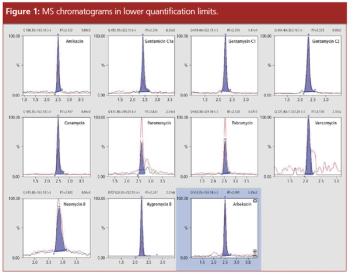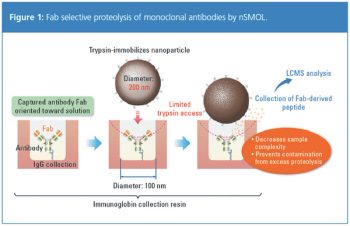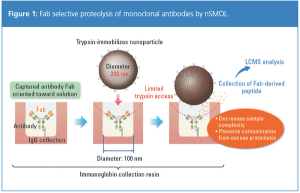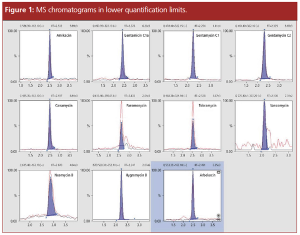
The benefits of a PESI-MS/MS approach to detect illicit drugs in saliva.

The benefits of a PESI-MS/MS approach to detect illicit drugs in saliva.

Quantification of Tau proteoforms in cerebrospinal fluid (CSF) could be useful to diagnose neurodegenerative diseases. LC–MS/MS results can help explain the underlying molecular mechanisms of disease evolution.

Therapeutic drug monitoring (TDM) is an important method for determining both dose and optimal effective level of a drug in the blood, preventing side effects such as kidney damage. Using the antibiotic classes aminoglycoside and vancomycin as examples, an analysis method is presented that combines fully automated sample preparation with ultrahigh-pressure liquid chromatography–triple quadrupole-mass spectrometry (UHPLC–TQMS).

This article describes a direct analysis of glyphosate, aminomethylphosphonic acid (AMPA), glufosinate, and 3-methylphosphinicopropionic acid (MPPA) in water by liquid chromatography coupled to tandem mass spectrometry (LC–MS/MS) without derivatization. The chromatographic separation was performed using a hydrophilic interaction liquid chromatography (HILIC) column and typical LC–MS mobile phases. Method performance was evaluated, showing excellent results. The low limits of quantification (LLOQs) obtained meet the requirements of EU guidelines and could also be used to get an agreement in France where regulations require lower LLOQs (NOR: DEVL1703763V).

This article describes a direct analysis of glyphosate, aminomethylphosphonic acid (AMPA), glufosinate, and 3-methylphosphinicopropionic acid (MPPA) in water by liquid chromatography coupled to tandem mass spectrometry (LC–MS/MS) without derivatization.

The application of a novel approach that enables a selective proteolysis of the Fab region of monoclonal antibodies (mAbs) is described. The technique is called nano-surface and molecular-orientation limited (nSMOL) proteolysis. By restricting the proteolysis to the complementarity-determining region (CDR) of the mAb, there is considerable reduction in sample complexity and the time required for method set-up and optimization.

Published: May 6th 2021 | Updated:

Published: December 5th 2017 | Updated:

Published: June 25th 2018 | Updated:

Published: July 1st 2018 | Updated:

Published: October 8th 2019 | Updated: